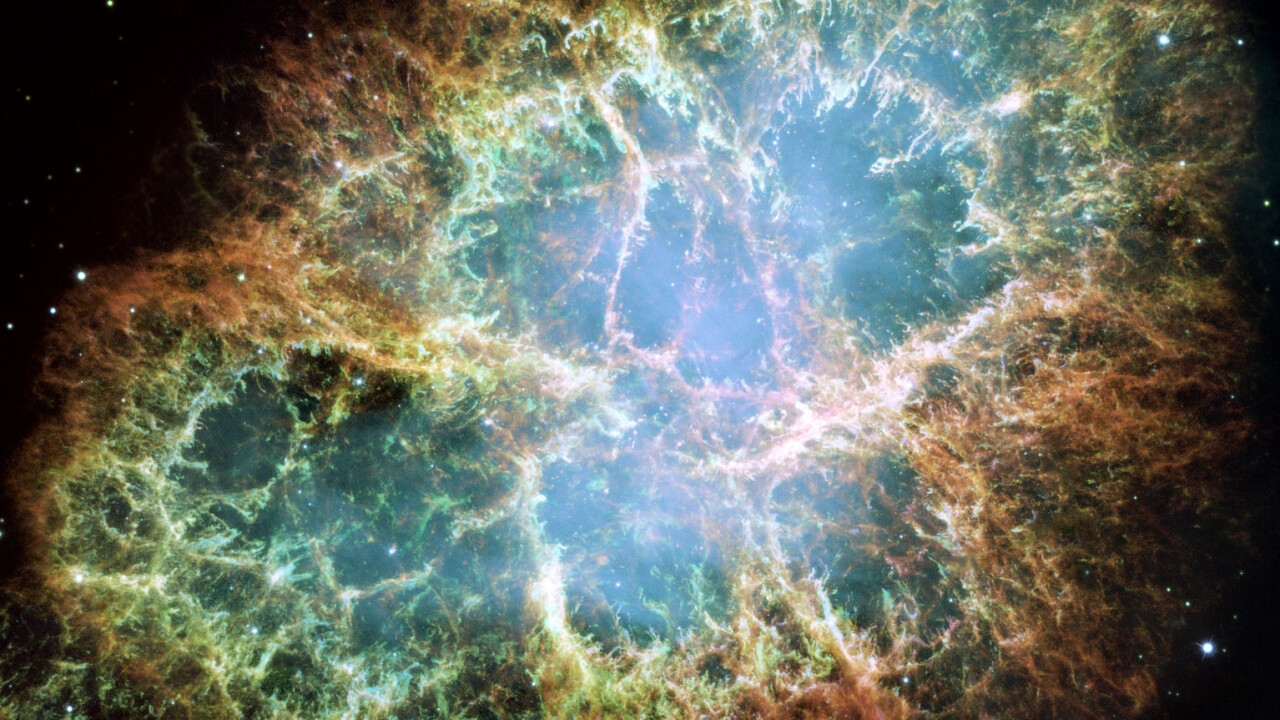Pulsars are one of the more intriguing objects in the sky, radiating regular flashes of electromagnetic energy, which can (sometimes) be seen from Earth. Flashing with astonishing regularity, these objects are stellar corpses of massive stars that met their demise in supernovae. When beams of energy are aligned just right, they can be seen from Earth as regular pulses of light.
Occasionally, pulsars produce unpredictable giant radio pulses (GRPs) — short-lived bursts of energy far more powerful than the flashes coming from the stellar corpse itself.
New observations show X-ray emissions from the pulsar at the heart of the Crab Nebula are about four percent higher than expected. This means the total amount of energy emitted by this object (and others like it) is tens to hundreds of times greater than previously believed.
It’s time to split

Nearly a thousand years ago, the ancient Anasazi people lived on lands that now make up much of Arizona and New Mexico in United States. On July 5, 1054, while Europe was wracked by a historic split between Eastern and Western churches, events in the sky underwent their own traumatic event.
On July 4, 1054 (or there about), a “new star” appeared in the constellation Taurus. This inexplicable appearance, seen near the crescent moon the following day, was recorded on the only media known to Anasazi skygazers — rocks — creating a record of this event which survives to this day.
This supernova — a titanic eruption of a massive star as it dies — was also seen by Chinese astronomers of the day. At its brightest, this supernova was four times brighter than Venus, making it visible, even during daylight, for 23 days. Records of the “guest star” continue in the night sky until April 1056, showing it was visible at night for more than 650 nights.
Today, we understand the basic underpinnings of supernovae, as well as the neutron stars they often leave behind (the most-massive supernovae produce black holes as their final product).
A fraction of these neutron stars are seen as pulsars. One of the intriguing aspects of pulsars are mysterious bursts of energy radiating from these objects. These highly-energetic bursts have, so far, only been seen coming from around a dozen of the 2,000-or-so known pulsars.
“Giant radio pulses (GRPs) are sporadic bursts emitted by some pulsars that last a few microseconds and are hundreds to thousands of times brighter than regular pulses from these sources. The only GRP-associated emission outside of radio wavelengths is from the Crab Pulsar,” researchers describe in the journal Science.
By the year 1300, the Anasazi disappeared, but the remains of the supernova of 1054 are still seen today as a colorful cloud of gas and dust known as the Crab Nebula.
Shine on, you crazy pulsar…
A team of researchers, led by the RIKEN Cluster for Pioneering Research, closely examined radiation coming from the pulsar at the heart of the Crab Nebula. Among the instruments used by the team was NASA’s Neutron star Interior Composition Explorer (NICER), newly-installed on the International Space Station (ISS) to examine neutron stars.
“I would like to mention astrophysics; in this field, the strange properties of the pulsars and quasars, and perhaps also the gravitational waves, can be considered as a challenge.” — Werner Heisenberg
A view of how pulsars in binary systems can produce vast amounts of power, in this video by NASA
Radio telescopes in Japan were also utilized for the study, including data from the Kashima 34-meter telescope, which was destroyed in a typhon in 2019.
Many questions remain about GRPs, but they may lead to fast radio bursts — so-far-unexplained radio signals from beyond the Milky Way galaxy.
“However, the relationship between the two is still controversial, and these findings, along with upcoming discoveries regarding fast radio bursts, will help us to understand the relationship between these phenomena,” cautions Teruaki Enoto, leader of the Extreme Natural Phenomena RIKEN Hakubi Research Team.
Fittingly, that guest star that shone so brightly nearly a thousand years ago continues to shine on today.
This article was originally published on The Cosmic Companion by James Maynard, founder and publisher of The Cosmic Companion. He is a New England native turned desert rat in Tucson, where he lives with his lovely wife, Nicole, and Max the Cat. You can read this original piece here.
Get the TNW newsletter
Get the most important tech news in your inbox each week.





